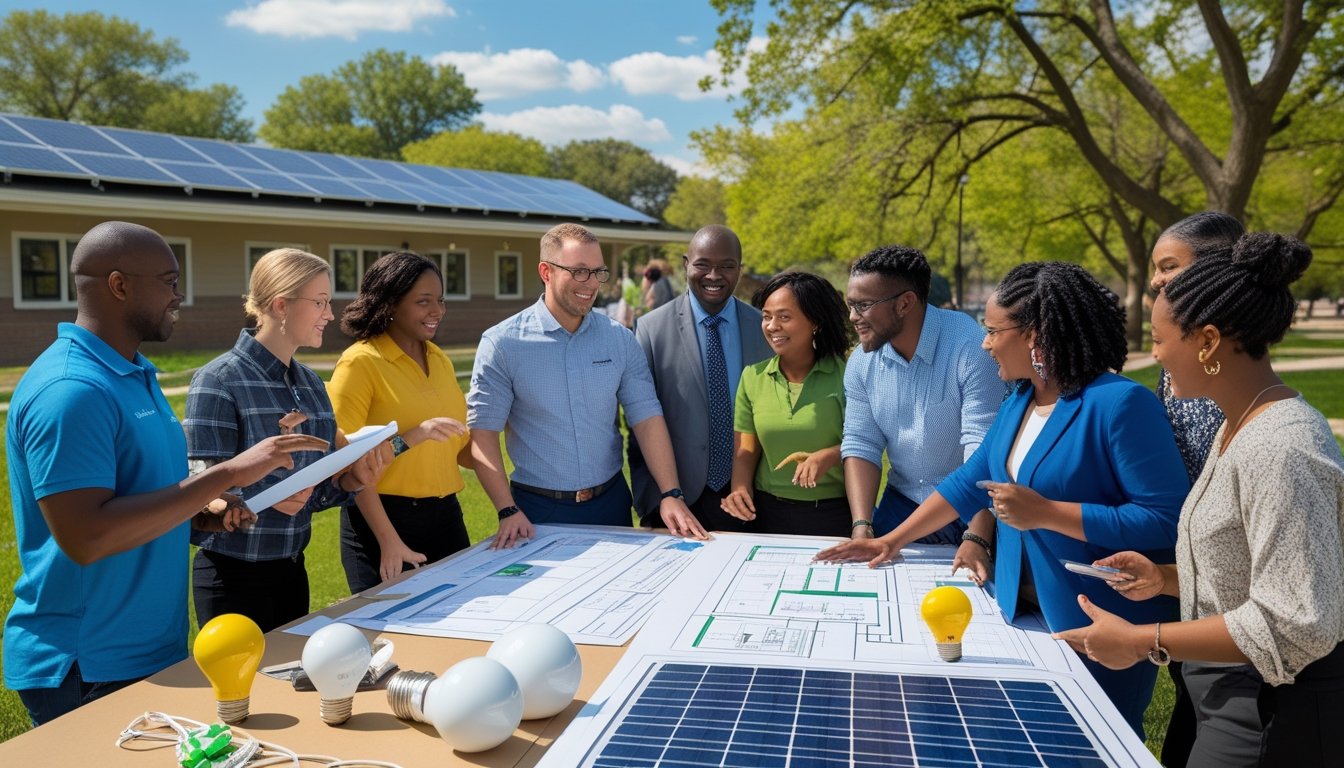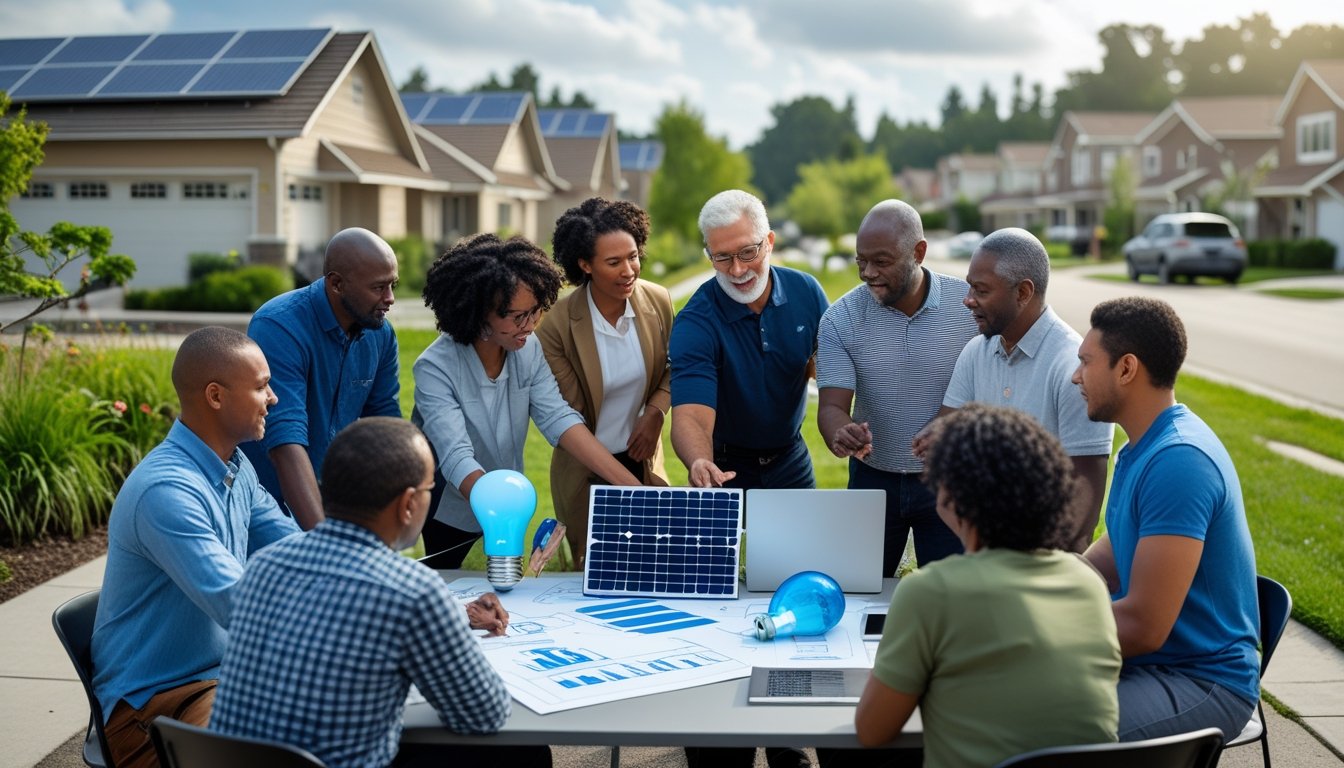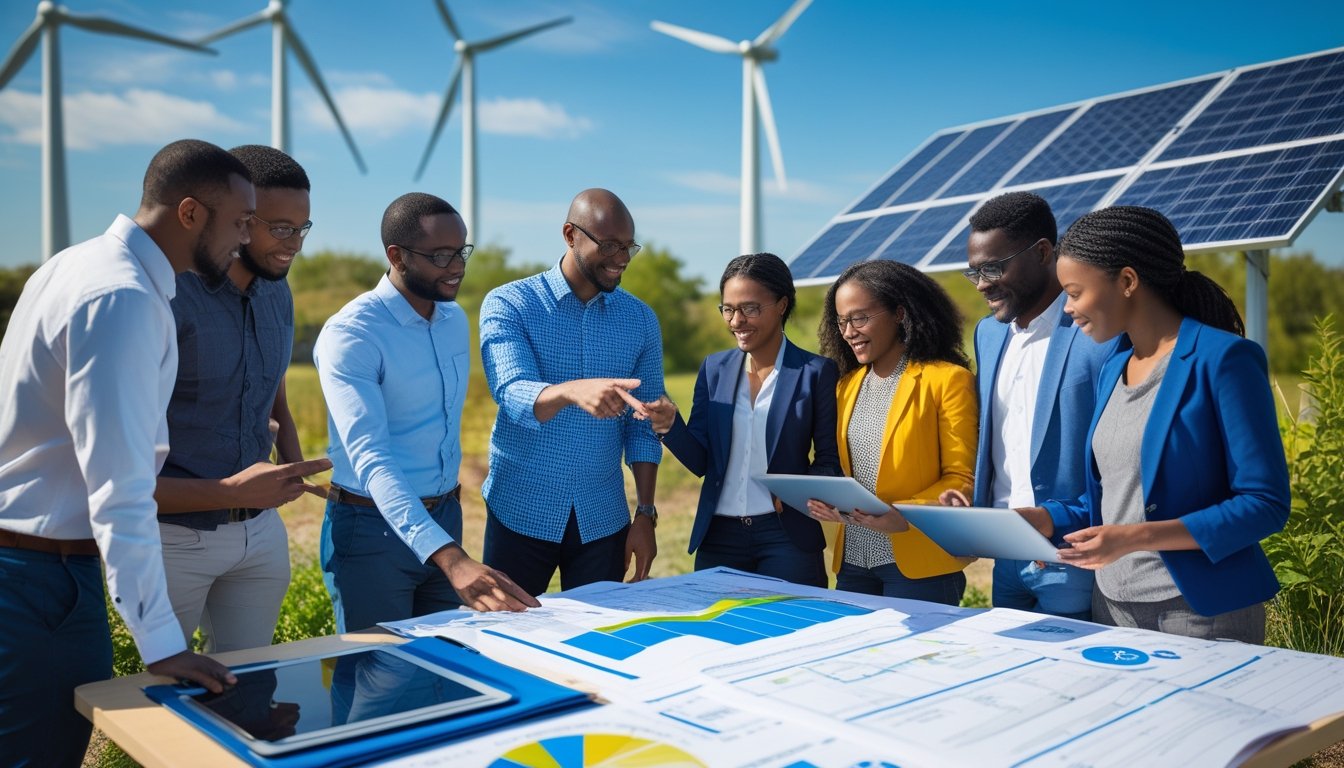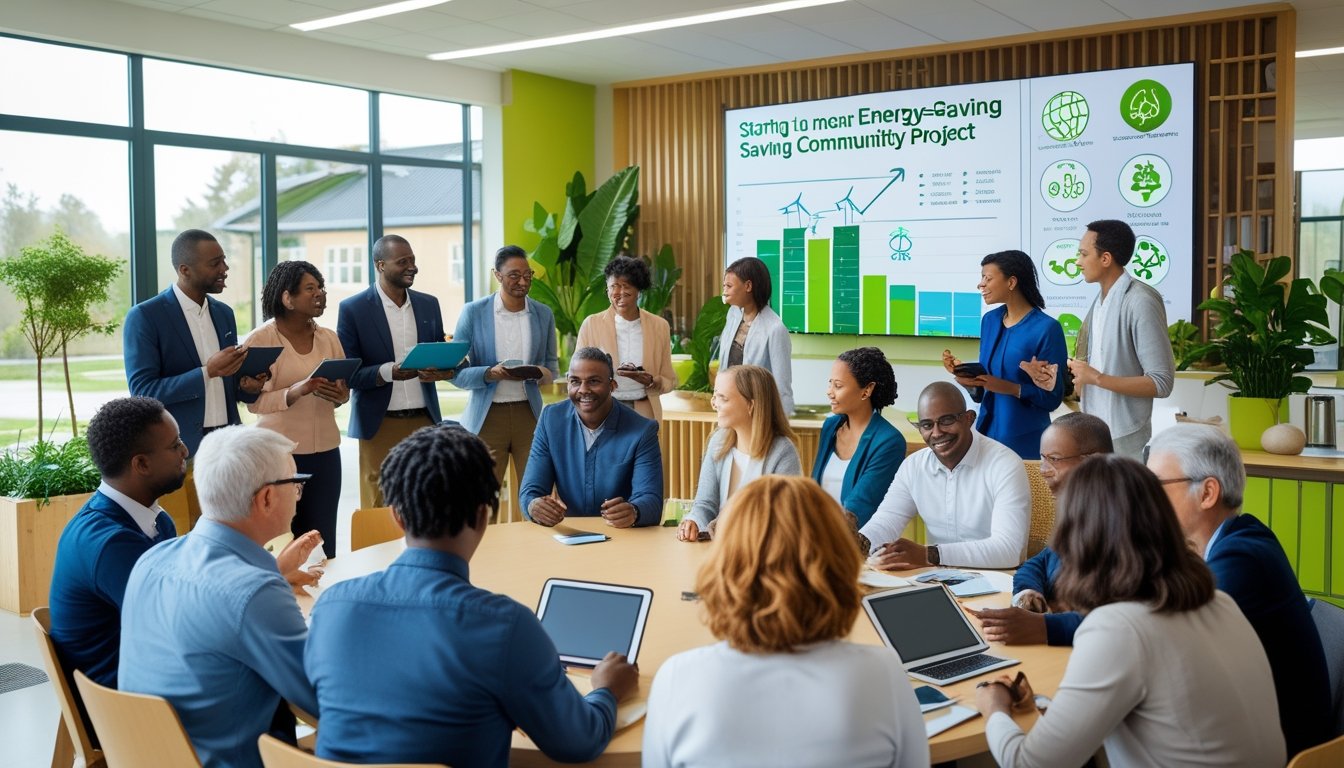Late updated: 16 Oct 2025 15:10
Written by: Eleanor Hartman
How To Start An Energy Saving Community Project: A Comprehensive Guide
Embarking on an energy-saving community project can seem daunting, but the benefits are immense for both the environment and our wallets. By harnessing local efforts and resources, communities can significantly reduce their energy consumption and lower utility costs. The key is to bring people together, cultivate enthusiasm, and implement well-thought-out strategies.

To initiate a successful project, we need to focus on building a solid foundation that involves evaluating energy needs and available resources. Engaging experts and local organisations can aid in this process, providing insights and support that empower us to make informed decisions. Nationwide, there are examples of communities that have successfully navigated the path to energy efficiency, demonstrating the viability and impact of these projects.
As we address frequent questions and potential challenges, our journey towards an energy-efficient community becomes clearer. It's crucial for each of us to stay informed and proactive about renewable energy options and energy-saving techniques. Our collective commitment can lead to a sustainable future for us all.
Key Takeaways
- Communities can lower energy costs through collective efforts.
- Evaluating needs and involving experts are crucial steps.
- Proactive engagement leads to sustainable solutions.
Essential Steps for Launching an Energy Saving Community Project

Starting a community energy project requires careful planning and coordination. We must first identify viable opportunities, engage with community members, and perform essential studies to ensure sustainability. Let's explore the critical steps involved.
Identifying Community Energy Opportunities
To launch a successful energy-saving initiative, it is essential to first assess what resources and needs exist within the community. This may include potential sites for renewable energy installations like solar panels or wind turbines.
We also look into existing energy consumption patterns to identify opportunities for energy efficiency improvements. This stage involves detailed data collection and analysis, where consultations with local energy providers and municipal authorities play a crucial role. They offer insights needed to shape our goals effectively.
Engaging Stakeholders and Building Local Partnerships
Community engagement is a cornerstone for any successful project. By engaging with local stakeholders, we build a network of individuals and organisations who share our vision. These partnerships might involve local councils, energy cooperatives, and resident associations that provide vital support.
Organising workshops and informational sessions can foster dialogue, helping to gather ideas and gain the community’s trust and interest. Establishing these partnerships not only aids in project execution but also in mobilising resources and expertise required for long-term success.
Conducting Feasibility Studies and Assessing Environmental Impact
Before any ground-breaking occurs, conducting feasibility studies is imperative. These assessments help us understand the technical and financial viability of proposed projects. We evaluate potential energy generation methods, the likely costs, and any legal or logistical challenges we may face.
Environmental impact assessments are also crucial. These ensure that projects align with sustainability goals and minimise any adverse effects on the local ecosystem. This stage may involve expert consultations and extensive documentation, guiding our approach to implement environmentally responsible solutions.
Through these steps, we set the foundation for a successful community energy project that not only benefits the environment but also integrates smoothly into local frameworks.
Developing and Implementing Renewable and Energy Efficiency Solutions

In developing and implementing renewable and energy efficiency solutions, we focus on selecting the right technologies, securing funding, and reducing carbon emissions. This holistic approach aims to enhance energy efficiency, lower energy bills, and promote sustainability.
Selecting Appropriate Technologies: Solar Panels, Wind Turbines, and More
Choosing the right renewable technologies is pivotal in bolstering community energy projects. Solar panels, for instance, can be integrated into residential and commercial buildings, providing a reliable source of solar energy. Community solar farms allow us to pool resources for greater collective benefit.
Wind turbines are another viable option. They can be installed where wind conditions are favourable, generating clean energy while reducing reliance on fossil fuels. Evaluating site-specific conditions helps in deciding whether other technologies like geothermal or hydropower should be included.
Securing Funding and Managing Project Finances
Accessing adequate funding can make or break a renewable energy project. We explore various financing options, such as government grants, private investments, and community fundraising. These resources are vital to covering upfront costs, which may otherwise hinder project initiation.
Budgeting must be meticulous to manage ongoing expenses effectively. Financial planning includes anticipating maintenance costs and potential upgrades. Utilising cost management strategies ensures long-term viability and economic resilience of our community initiatives.
Maximising Energy Efficiency and Reducing Carbon Emissions
Improving energy efficiency is crucial for reducing carbon emissions and enhancing sustainability. We can adopt practices that optimise energy usage in both residential and commercial sectors. This encompasses using energy-efficient appliances and adopting intelligent energy management systems.
The transition to carbon-neutral operations involves integrating clean energy into daily activities. Reducing carbon footprints not only benefits the environment but also lowers energy bills for businesses and residents. Through rigorous monitoring and adaptive strategies, we succeed in making sustainable changes that positively impact both the community and the broader energy sector.
Frequently Asked Questions

Launching an energy-saving community project involves careful planning and collaborative efforts. Organising initial steps, community engagement, funding, impact assessment, educational resources, and strategic partnerships are crucial to the success of such initiatives.
What are the initial steps for organising a local energy conservation initiative?
Beginning an energy conservation initiative requires assembling a group of interested community members. Together, we should identify local energy concerns and select a suitable location for any physical installations. Establishing a clear plan with defined objectives will provide direction and help in allocating responsibilities.
How can one engage community members in sustainable energy practices?
Engagement begins by raising awareness about the benefits of energy conservation. We can host informational sessions and workshops that demonstrate practical energy-saving practices. Encouraging community members to share their success stories can further inspire involvement and participation.
What funding opportunities exist for community-based energy saving projects?
Several funding sources, such as government grants, local energy agencies, and environmentally-focused charities, can be explored. We may also consider crowdfunding campaigns, which allow community members to financially contribute to the project's realisation and growth.
What are effective ways to measure the impact of a community energy saving scheme?
To evaluate impact, we can analyse utility bills and consumption patterns before and after project implementation. Using energy monitoring tools will help track usage changes over time. Regular feedback sessions with participants will also provide qualitative insights into the scheme's effectiveness.
Can you suggest educational materials to raise awareness about energy efficiency in our community?
There are numerous resources available, such as online guides and downloadable pamphlets from reputable energy trust organisations. Multimedia presentations and interactive workshops can offer engaging learning experiences. Local libraries or community centres might also host informative events on the topic.
What partnerships should be considered to enhance the reach and effectiveness of a community energy project?
Partnering with local government bodies, renewable energy experts, and educational institutions can significantly bolster the project's reach. Collaborations with local businesses and NGOs specialising in sustainability can also bring additional resources and expertise to the initiative.